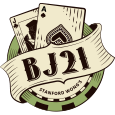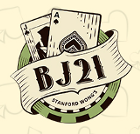Hedge Mistakes -- Missing a Bet

King Yao is the author of Weighing the Odds in Hold‘em Poker, and Weighing the Odds in Sports Betting. He uses his experience from making millions in financial derivative markets and translates it into gambling. Since he left his trading position in 2000, he has been playing poker and betting on sports. He travels to Las Vegas frequently, especially during football season.
All prospective sports bettors should know the basic principles of sports betting. Some bettors know that hedging is generally a bad idea, so they never consider the idea of hedging. This can be a mistake, because it may mean passing up opportunities to make more money.
Planning a future hedge can allow you to make larger initial positive-EV bets. In order to justify the planned hedge, the combination of the positive EV in the larger initial bet and the negative EV of the planned hedge must be greater than the positive EV in the alternative smaller initial wager.
One situation where planning a future hedge is useful is when you think there is a high chance the line will move so much that you can bet the other side at a better price at a later time. This means you can make an initial bet that you would not normally make (or a larger than normal initial bet) because you know you are going to hedge it in the future and probably have a nice scalp or middle.
Without the possibility of hedging, you may not make the initial bet at all and miss out on making some money.
Here is an example where the line has a high chance of increasing. One bettor completely ignores the thought of hedging, while the other bettor takes advantage of a planned hedge.
It is Tuesday night and the Dodgers are playing the Giants.
Before the game starts, several sportsbooks already have lines on the Wednesday game, which is set at Dodgers -160, Giants +150. That seems like a fair line.
In the first inning of the Tuesday game, a star Giants player (let’s call him Willie) pulls a hamstring muscle while chasing a flyball in left field. He is taken out of the game after the play and later the broadcaster announces that Willie will be put on the Injured List. This means he will definitely not play in Wednesday’s game.
Willie is one of the best hitters in baseball, and having him out of the lineup is a big blow to the Giants. The Wednesday line of Dodgers -160 is now a great bet without Willie in the Giants lineup.
Bettor #1 is a smart player who tries to take advantage of mistakes made by sportsbooks. But he does not think hedging is a good idea since he is willing to take any risks that he bets on and is not happy with making any negative-EV bets. When he sees the injury to Willie, he quickly races to the sportsbook and makes a normal sized bet. The line is still Dodgers -160 and he bets $160 to win $100. In the morning, he notices the line has moved up to Dodgers -200, Giants +180. He is happy with his nice positive-EV bet on the Dodgers -160. He does not hedge because he is not interested in making a negative-EV bet to get out of his risk.
Given the size of his original wager, it is smart of him not to hedge. The fair value on the Dodgers is -190 (or 65.5%), and the EV of his initial bet is:
Bettor #1’s EV: $100 x 65.5% - $160 x 34.5% = +$10.30
Bettor #2 is also a smart player who tries to take advantage of mistakes made by sportsbooks. But he is willing to keep an open mind and tries to make as much money as possible. His normal sized bet is the same as Bettor #1, but instead of betting $160 to win $100 on the Dodgers when he sees the injury to Willie, he bets three times as big, $480 to win $300. In the morning when Willie’s injury is embedded in the new line, Bettor #2 happily makes a negative-EV bet by betting $200 on the Giants at +180, thus scalping out two-thirds of his original wager.
He is left with a net position of $120 to win $100 on the Dodgers, which is superior to Bettor #1’s $160 to win $100. Here is the combined EV of Bettor #2’s bets:
Bettor #2’s normal sized bet on the Dodgers -160:
$100 x 65.5% - $160 x 34.5% = +$10.30
Bettor #2’s extra $200 that he plans to hedge:
$200 x 65.5% - $320 x 34.5% = $20.60
Bettor #2’s hedge bet on the Giants at +180:
$360 x 34.5% - $200 x 65.5% = -$6.80
Total EV: $10.30 + $20.60 - $6.80 = +$24.10
Bettor #2 is well aware that the hedge is a negative-EV bet.
However, he also knows that without the hedge, he would not have made the initial bet of $480 to win $300. If he was not going to hedge, he would simply make his normal sized bet of $160 to win $100. He has counted on making a negative-EV hedge in the future in order to increase his overall EV. In the end, Bettor #2 has $13.80 more EV than Bettor #1.
Bettor #2 did take some additional risk. There is no guarantee the line would go in the direction that he hoped. The line might have stayed unchanged or might even have moved in the other direction.
This is part of an occasional series of articles.
Excerpted with permission from the e-book version of Weighing the Odds in Sports Betting by King Yao, edited for this format.












Please log in or register to leave a comment